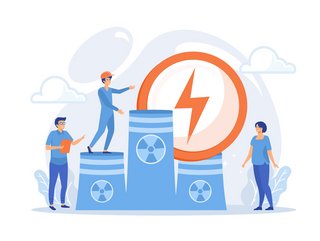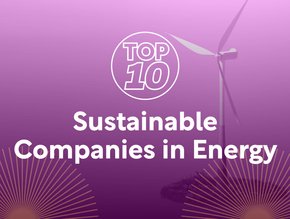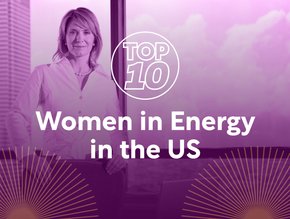Top 10: Nuclear Energy-Producing Countries

Sustainability, renewable energy, net zero – these terms, and more, are at the forefront of our climate change vernacular, with the conversation concentrated on how global industries can move towards clean energy to combat the climate crisis.
As we seek to rely less on high-emission energy sources, nuclear energy can serve as a low-carbon, transitory solution. In fact, 441 nuclear reactors currently generate 10% of global electricity.
Although not renewable, nuclear energy is still recyclable and produces zero greenhouse gases, serving as the second-largest source of low-carbon energy in the world behind hydropower.
Here are the world’s top 10 nuclear energy-producing countries.
10. Spain
Nuclear Generation: 7.1GW
Recently replacing Sweden in the number 10 spot, nuclear energy currently accounts for 22% of Spain’s electricity. The country has an installed capacity of 7.1GW, generated by seven reactors.
Nuclear plants are currently essential to the country's energy grid needs and ministers have thus lifted limits to their operational lifespans. In 2020 and 2021, six of the country's seven reactors renewed their licences. All of these would expire before 2035 – the deadline for the Spanish Government's planned phaseout of nuclear power.
9. UK
Nuclear Generation: 8.9GW
Coming in at number 9 is the UK, with a combined net nuclear energy capacity of 8.9GW from 13 operable nuclear reactors. The country generated a total of 51TWh of nuclear energy in 2019 – 15.6% of the UK’s total electricity output.
Expected to open in June of 2027, construction has started on two new nuclear reactors, Hinkley Point C1 and Hinkley Point C2, which will supply low-carbon electricity for 6 million homes.
Approximately half of its existing nuclear power reactors will be retired by 2035.
8. Ukraine
Nuclear Generation: 13.1GW
With 15 operable nuclear reactors and a combined net installed capacity of 13.1GW, Ukraine is in the number 8 spot.
Two reactors (Khmelnitski 3 and 4) are currently under construction, with heavy water reactors providing 2GW net capacity.
Ukraine produced a total of 78.1 TWh of nuclear energy in 2019, accounting for 53.9% of the total electricity produced in the country.
Due to current geopolitical instability – and to subsequently lessen its reliance on Russian nuclear fuel and services – the country is proactively purchasing fuel from US-based Westinghouse.
7. Canada
Nuclear Generation: 13.6GW
In the number 7 spot is Canada, with 19 operational nuclear reactors that are spread across four power plants, amounting to a total of 13.6GW net installed capacity.
Canada generated 94.9TWh of nuclear energy in 2019, accounting for 14.9% of the country’s total power generation.
All the power plants in Canada utilise Canadian Deuterium-Uranium (CANDU) reactors, which are pressurised heavy water reactors that use uranium as fuel, and water as both a coolant and moderator.
6. South Korea
Nuclear Generation: 24.5GW
With 24 nuclear reactors in operation – a combined 24.5GW capacity – South Korea is in number 6. The south-eastern region of the country is a major hub for high electricity demand due to it being home to several heavy manufacturing plants.
South Korea generated 139TWh of nuclear energy in 2019, deriving a total of 26% of its total electricity from nuclear energy in 2019.
5. Russia
Nuclear Generation: 29.6GW
Often touted as the original frontrunner of nuclear technology due to the USSR’s industrial efforts, Russia takes the number 5 spot, with 38 operating reactors and a net capacity of 29.6GW.
Russia produced 195.5TWh of nuclear energy in 2019, which accounted for approximately 19.7% of the total electricity generated.
Two reactors – as part of the Kursk II project – with a net capacity of 2.3GW, are currently under construction.
4. Japan
Nuclear Generation: 32GW
At number 4 is Japan, with a total of 33 operational nuclear plants that have 31.7GW net installed capacity. Two reactors, Ohma 1 and Shimane 3, are currently under construction but will, when finished, account for an additional net capacity of 2.6GW
Prior to the Fukushima nuclear incident in 2011, 30% of Japan’s energy requirements were derived from nuclear energy. Now, the country imports 90% of its energy requirements.
3. China
Nuclear Generation: 50.8GW
A net installed capacity of 50.8GW via 51 nuclear reactors makes China the third biggest nuclear energy-producing country in the world.
Though currently under construction, China is planning to grow its power system, with 18 reactors to open soon. Collectively, this would generate 17.2GW for China’s power systems. The country is also planning to build an additional 39 nuclear reactors with a combined gross capacity of 43GW.
2. France
Nuclear Generation: 63.1GW
Generating a larger share of nuclear energy than any of its counterparts on this list, France produces two-thirds of its electricity from nuclear sources from 56 operational reactors, which collectively generated 338.7TWh in 2020.
Low production costs and general expertise in this area have allowed the country to generate approximately 17% of its electricity from recycled nuclear fuel.
France will build more reactors in years to come, aiming to decarbonise its power generation by 2050.
1. USA
Nuclear Generation: 91.5GW
In the number 1 top spot is, perhaps unsurprisingly, the USA. It boasts a total nuclear capacity of 91.5GW, which is generated by 93 reactors that are spread across 30 of the country’s 50 states. This capacity currently allows for the production of 20% of the country’s total electricity consumption, with the US – particularly since 2016 – relying more on coal and gas for power production.
The state of Georgia is to see the construction of two more reactors, part of the Vogtle project.
- Dare is combining energy & tech to support sustainabilityTechnology & AI
- Is nuclear energy the key to achieving net-zero emissions?Renewable Energy
- Nuclear energy — the unsung hero of the climate challengeRenewable Energy
- Energy Digital news roundup: renewable energy investmentsRenewable Energy






